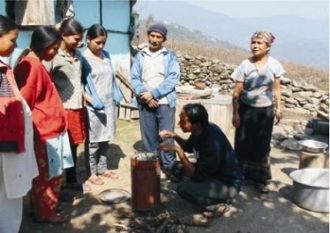Stunting is associated with poor outcomes in childhood pneumonia. Trop Med Intl Health, July 2015.
Authors: Peter P. Moschovis, Emmanuel O. D. Addo-Yobo, et al.
Objective - Stunting affects 26.7% of children worldwide, and little is known about its effects on the outcomes of childhood pneumonia. We evaluated the effect of stunting on the outcomes of pneumonia among children enrolled in two large clinical trials.
Methods - We analysed data from two WHO and USAID-sponsored inpatient treatment trials, the Severe Pneumonia Evaluation Antimicrobial Research study (n = 958) and the Amoxicillin Penicillin Pneumonia International Study (n = 1702), which enrolled children aged 2–59 months across 16 sites in LMICs. We assessed the effect of stunting (height-for-age Z score < −2) on treatment outcome and time to resolution of hypoxaemic pneumonia.
Results - Among 2542 (96%) children with valid data for height, 28% were stunted and 12.8% failed treatment by 5 days. The failure rate among stunted patients was 16.0% vs. 11.5% among non-stunted patients [unadjusted RR = 1.24 (95% CI 1.08, 1.41); adjusted RR = 1.28 (95% CI 1.10, 1.48)]. An inverse relationship was observed between height and failure rates, even among non-stunted children. Among 845 patients with hypoxaemic pneumonia, stunting was associated with a lower probability of normalisation of respiratory rate [HR = 0.63 (95% CI 0.52, 0.75)] and oxygen saturation [HR = 0.74 (95% CI 0.61, 0.89)].
Conclusions - Stunting increases the risk of treatment failure and is associated with a longer course of recovery in children with pneumonia. Strategies to decrease stunting may decrease the burden of adverse outcomes in childhood pneumonia in low-resource settings.





Comments on this entry are closed.